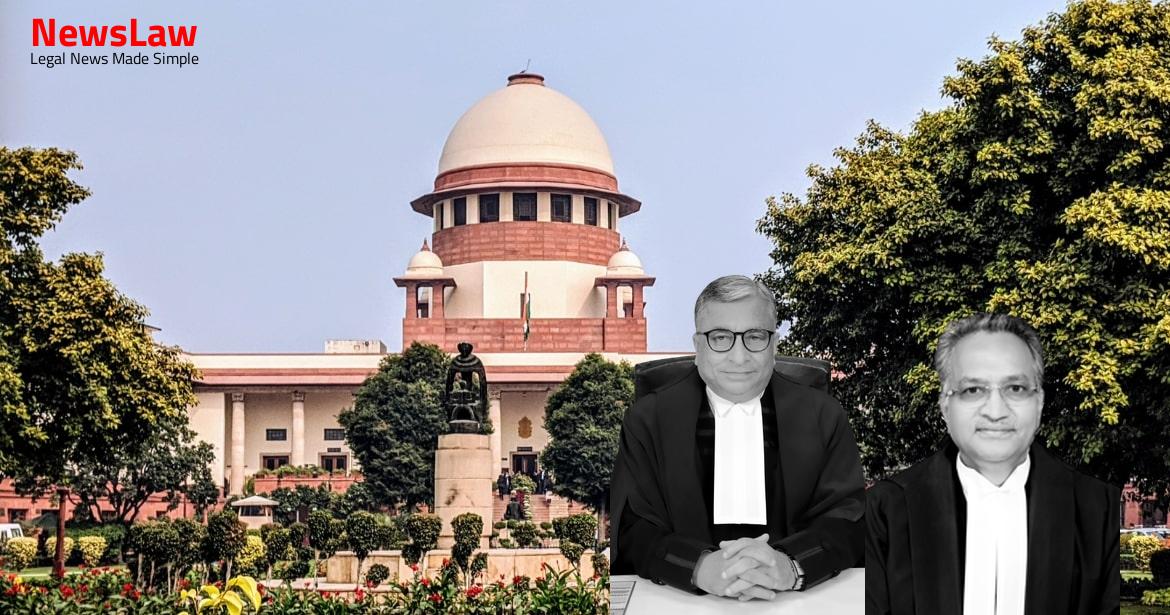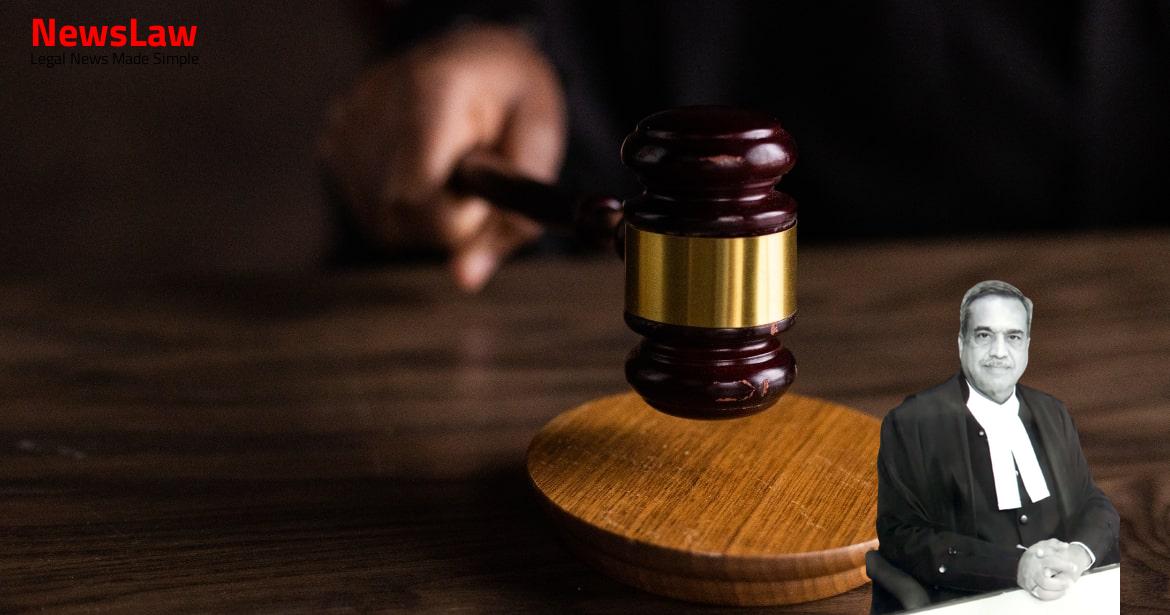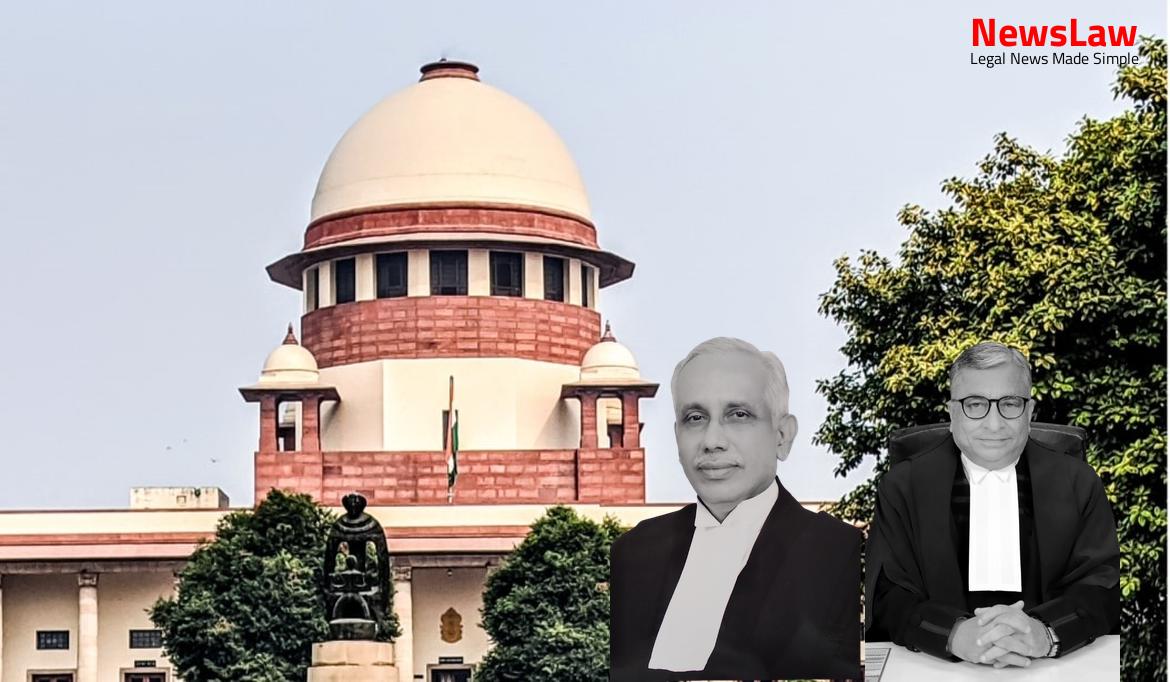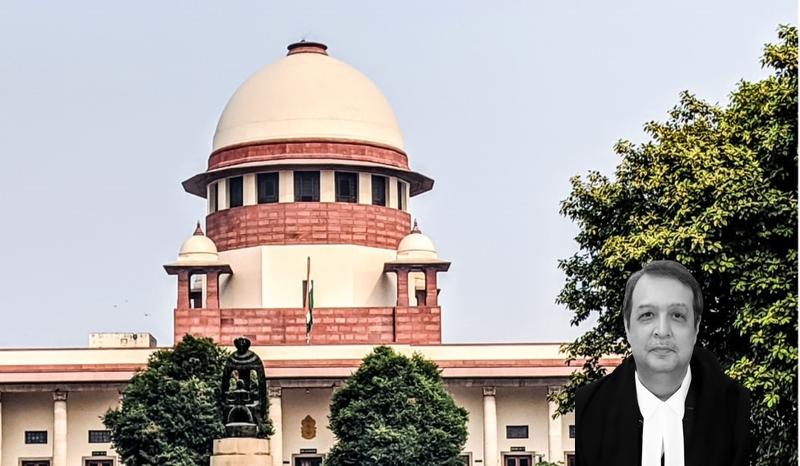In a recent legal case, the High Court delved into the intricacies of evaluating eyewitness testimony. The court raised pertinent questions about witness credibility and the importance of corroborating evidence. This summary focuses on the court’s in-depth legal analysis and critical examination of witness accounts. Stay tuned to unravel the complexities of assessing eyewitness testimony in the legal realm.
Facts
- High Court dismissed the criminal appeal challenging the order of conviction under Section 302 IPC r/w Section 34 IPC
- No interference was made as the impugned judgment was found to be free from infirmity or perversity
- Accused Inderjeet Singh was convicted under Section 27 of the Arms Act and sentenced to life imprisonment along with a fine of Rs.5000/- each or 3 months of Simple Imprisonment in default
- Inderjeet Singh was also sentenced to one year of Rigorous Imprisonment under Section 27 of the Arms Act
- Inspector arrested accused Inderjeet Singh and recorded his disclosure statement.
- Recovered knife used in the murder.
- Photographed the spot, prepared site plan.
- Seized various items including broken hockey, shoes, steel strip, blood samples, etc.
- Recorded statements of witnesses and collected post mortem reports.
- Accused Amar Singh and Shiv Charan also gave disclosure statements and recovered hockeys.
- Proceedings against deceased Shiv Charan abated during appeal.
- Accused brandished weapons when others tried to rescue the victim.
- Recovered items sent to CFSL in sealed pulandas.
- Challan filed under relevant sections in court.
- Accused pleaded not guilty and faced trial.
- Prosecution examined 27 witnesses.
- Appeal filed by accused appellants before High Court.
- Accused Inderjeet Singh separately charged under Arms Act.
- Previous murder case involving victim’s brother mentioned.
- Incident details at Sukhdev Market narrated.
- Accused denied prosecution’s case during statements under Section 313 Cr.P.C.
- Details of the incident on 3.8.1990 provided.
- Accused released on interim bail and lived with sister Saroj.
Also Read: Balancing Civil Disputes and Criminal Offenses
Arguments
- The defence pointed out inconsistencies in the MLC of the deceased, suggesting tampering with the information recorded.
- Concerns were raised about the credibility of the sole eyewitness, who is a close relative of the deceased.
- The defence argued that the deceased had a motive to falsely implicate the appellants due to a prior murder case involving the appellant’s father.
- Challenges were raised regarding the arrest of the accused and the lack of independent witnesses to the recovery of evidence.
- The defence highlighted the discrepancy in the type of knife recovered and the injuries mentioned in the post mortem report, casting doubt on the prosecution’s case.
- The Senior Counsel for the appellants stated that the entire incident seemed improbable.
- Another eyewitness, Sujan Singh, did not support the prosecution’s case.
- Doubts were raised about the unnatural conduct of the alleged eyewitness, Parminder Singh, at the time of the incident.
- Amar Singh, a witness, claimed darkness during the incident and suggested that the accused were falsely implicated.
- Issues were raised about the lack of support from witnesses and the unreliability of the remaining sole eyewitness, Parminder Singh.
- The Trial Court did not believe in the recovery of the hockey stick at the appellant’s instance.
- Ms. Aishwarya Bhati argued that two Courts had found the accused guilty based on the testimony of a reliable eye witness and there is no legal obstacle to the conviction.
- She contended that convicting the appellants solely on the testimony of one witness, whose behavior was suspicious, was risky without corroboration.
- Three eye witnesses were presented by the prosecution, but two turned hostile during the trial.
- Ms. Aishwarya Bhati highlighted that even though witnesses turned hostile, their admissible parts of evidence can still be relied upon by the prosecution.
Also Read: Legal Analysis on Regularization of Irregular Appointments
Analysis
- Courts insist on corroboration if there are doubts about the testimony.
- It would be practically impossible for three assailants to inflict 15 injuries within 5 minutes.
- Eye witness testimony of Parminder Singh PW-1 is inconsistent with the time frame of the incident.
- Injuries No. 11 and 14 were individually and collectively sufficient to cause death.
- The conduct of Parminder Singh PW-1 and Amar Singh PW-11 casts doubt on their presence at the scene.
- Failure to obtain medical opinion on the weapon used in the crime was a serious lapse.
- Importance of eliciting medical witness opinion on the weapon used in causing injuries emphasized by the Court.
- Discrepancy between ocular testimony and medical evidence noted.
- Conviction based solely on the testimony of PW-1 is questioned due to unreliable conduct and inconsistencies.
- Presence of PW-1 at the incident scene called into doubt due to unnatural behavior and lack of intervention to save the victim.
- No legal impediment in convicting based on a single witness, but reliability must be established.
- Unnatural conduct of the two brothers and lack of corroborating evidence raise suspicion on PW-1’s testimony.
- Possible error in the recording of events related to the arrival of the PCR Van and the actions of the witnesses.
- The conduct of PW-1 and PW-11 during and after the incident raises doubts about their presence and involvement.
- Inconsistencies in witness accounts and lack of intervention to save the victim’s life questioned the credibility of the testimonies.
- Failure to seek medical opinion on the weapon used in the crime undermined the prosecution’s case.
- Recorded details regarding the PCR Van arrival and the MLC raise further doubts on the events and testimonies.
- Eye witness evidence should not be accepted at face value
- Similar view taken in other cases like Mitter Sen and others V/s State of U.P. and Selvaraj V/s The State of Tamil Nadu
- In Selvaraj case, prosecution story was found highly improbable and inconsistent with ordinary course of human nature
- Concurrent findings of guilt by lower courts set aside in Selvaraj case
- The prosecution failed to prove the guilt of the accused beyond doubt.
- The appellants must be given the benefit of doubt due to lack of evidence.
- The impugned orders of the Courts below were set aside and the appeals were allowed.
- The prosecution did not establish the guilt of the accused beyond reasonable doubt.
Also Read: Legal Analysis of Abetment of Suicide Allegations
Decision
- The appellants are directed to be released forthwith unless required in any other case.
Case Title: AMAR SINGH Vs. THE STATE (NCT OF DELHI) (2020 INSC 587)
Case Number: Crl.A. No.-000335-000335 / 2015



